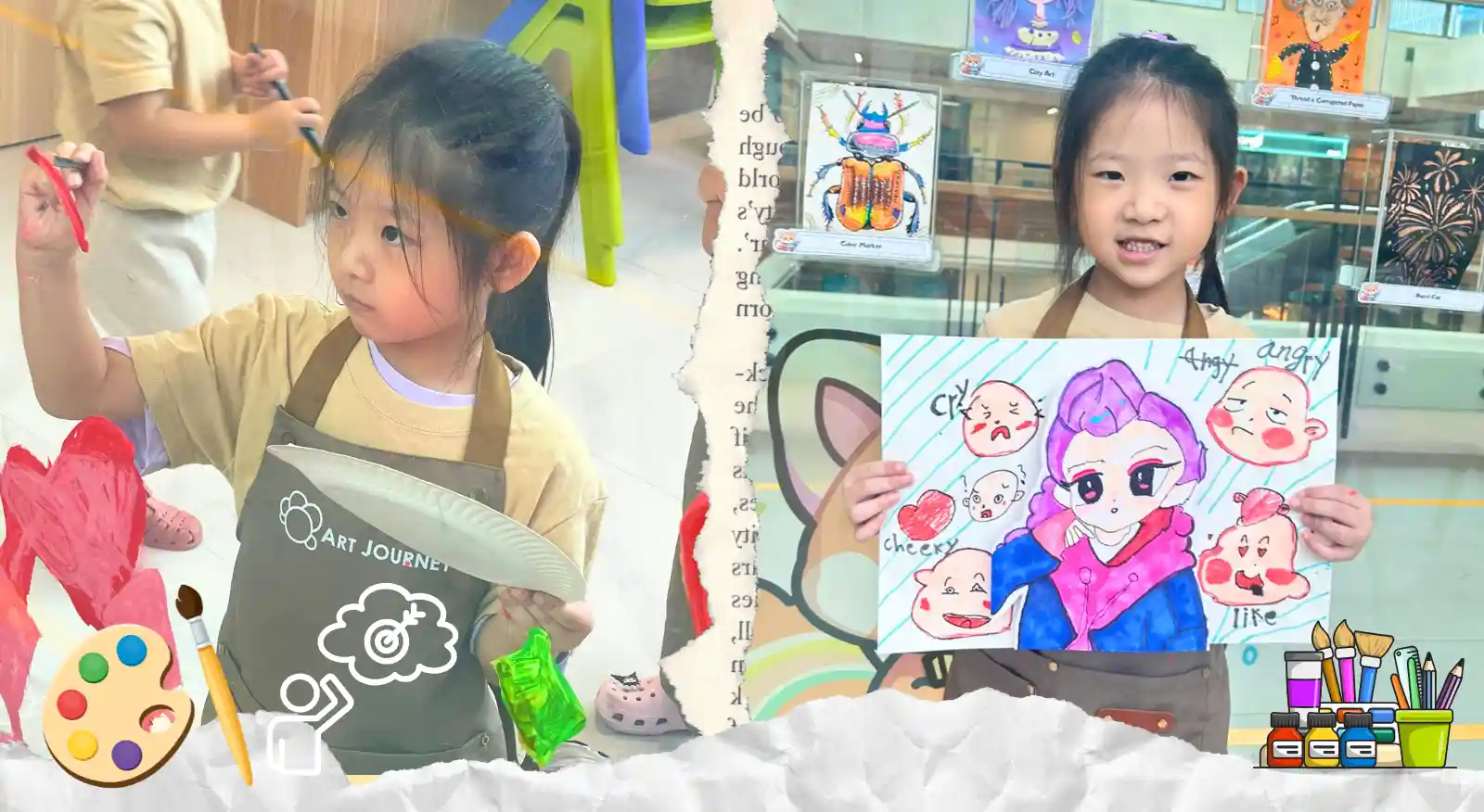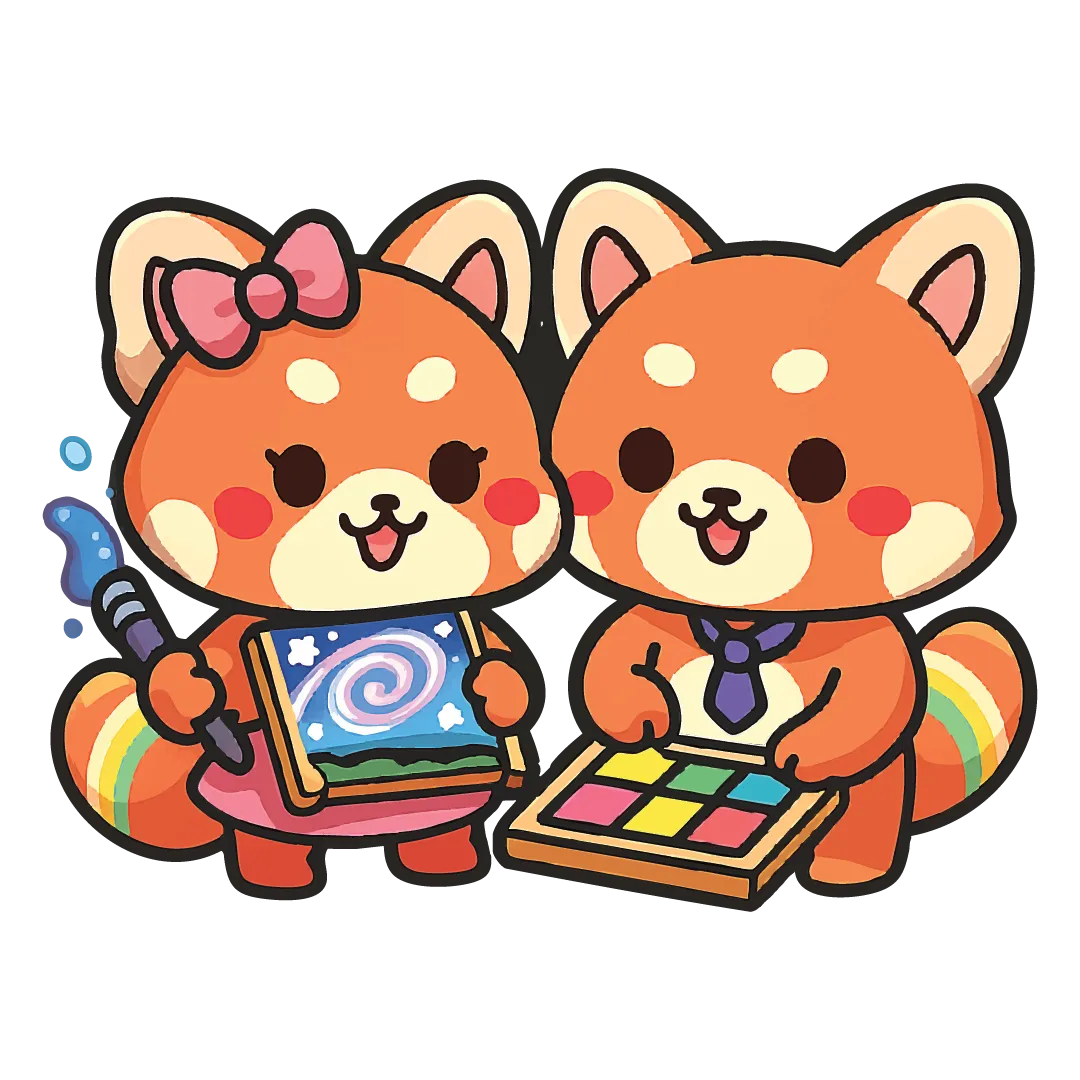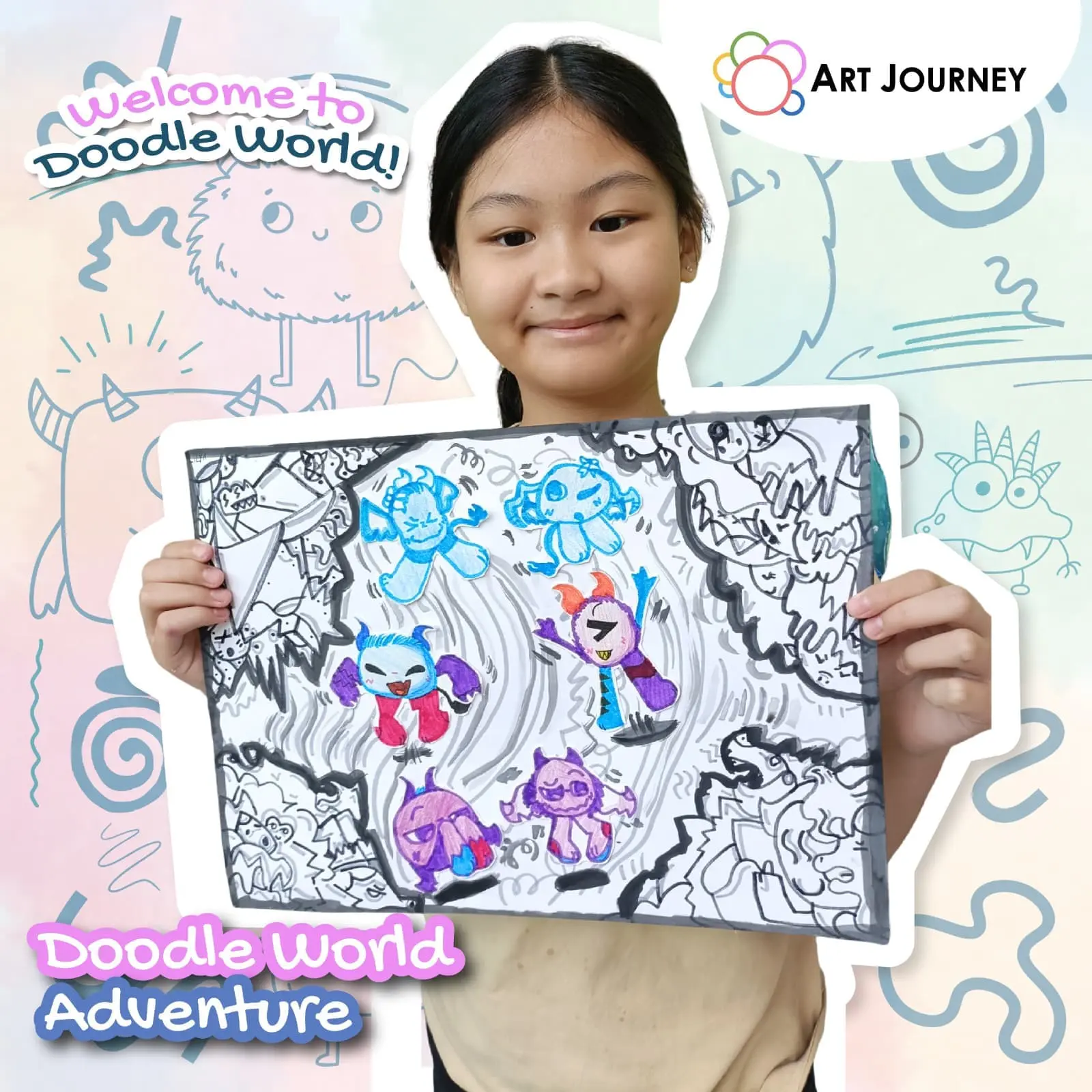
What to Expect in Your Child’s First Art Class
Your child’s first art class is more than just a fun weekend activity — it’s a moment of discovery, imagination, and self-expression. For many children, it’s the first time they’re handed a brush, given colors to play with, and encouraged to create something entirely their own.
If you’re a parent preparing for this milestone, you might be wondering: What really happens in an art class? Will my child follow lessons, or just play? How do I know if they’ll enjoy it?
Let’s walk through what you can expect — from the moment you enter the studio to the smile your child takes home at the end.
1. A Warm and Welcoming Environment
When you step into a kids’ art studio like Art Journey Singapore, the first thing you’ll notice is the colorful, creative energy. Walls are often decorated with paintings from previous classes, and tables are neatly set up with brushes, palettes, and paints.
Instructors welcome each child warmly, creating a friendly atmosphere where kids feel safe, curious, and excited to explore. This first impression helps shy children ease into the experience without pressure.
2. A Gentle Introduction — Not a Formal Lesson
A child’s first art class isn’t about perfection. It’s about exploration. Instructors begin by introducing basic tools — brushes, crayons, sponges, or even fingers!
Children are encouraged to touch, mix colors, and experiment freely. At Art Journey, for example, first-timers might start with simple painting or mosaic activities designed to build comfort and curiosity rather than skill.
This phase is all about letting kids feel the joy of creating, not following rigid instructions.
3. Small Groups and Individual Attention
Unlike typical classroom setups, art classes maintain small group sizes. This ensures that every child gets personal guidance without feeling lost or overlooked.
Teachers observe each student’s comfort level and adjust their approach — whether that means offering step-by-step help or giving independent kids more freedom.
This balance helps your child develop confidence while still feeling supported throughout the session.
4. Playful Learning Through Colors and Textures
Art classes for young children are sensory-rich experiences. Kids will experiment with different textures (clay, mosaic pieces, paper) and explore vivid colors through paints or craft materials.
For example:
- In a painting session, they’ll learn how to blend colors.
- In a mosaic class, they’ll develop hand-eye coordination by placing small pieces into patterns.
- In mixed-media art, they might use everyday materials to build something entirely new.
These activities help children think creatively and develop fine motor skills in fun, engaging ways.
5. Expect a Bit of Mess — and a Lot of Smiles
Let’s be honest — art classes can get messy! Paints may splatter, and tiny hands may wander from canvas to apron. But that’s part of the magic.
Parents often find that their kids come out with paint-stained fingers but huge grins. The joy of creating something by hand outweighs the mess every time.
Studios like Art Journey Singapore are well-prepared for this — with aprons, washable materials, and cleaning supplies — so parents can relax and enjoy watching creativity unfold.
6. A Balance of Guidance and Freedom
Instructors strike a perfect balance between guiding kids through structured tasks and letting them express themselves freely.
For example, a teacher might start with a theme — “Under the Sea” or “My Family” — but allow each child to interpret it their own way. One child might draw fish, another waves, another a rainbow-colored submarine!
This flexible structure builds decision-making skills and helps children develop confidence in their choices.
7. Gentle Encouragement, Not Correction
In an art class, there are no wrong answers. Teachers encourage kids to make creative choices, even if they’re unconventional.
Rather than correcting, instructors praise effort and imagination — turning every attempt into a success.
This positive reinforcement helps children who may fear “getting it wrong” in school settings. Art becomes a space where mistakes are part of the process, not failures.
8. Building Confidence Through Achievement
When the session ends, every child leaves with something tangible — their very own piece of art. Whether it’s a painted canvas, a colorful mosaic, or a paper collage, that artwork becomes a symbol of achievement and pride.
Parents are often surprised to see how proud their kids feel holding up their first creation. It’s a beautiful way to build confidence and self-worth through creativity.
9. A Spark That Often Leads to a Lifelong Hobby
Many children who attend their first art class ask to return again. That’s because art taps into a natural curiosity — and the freedom to express themselves in a non-judgmental space.
Studios like Art Journey make sure kids associate art with fun, not pressure, encouraging them to keep exploring their creativity through regular weekend sessions, school holiday workshops, or birthday activities.
Here’s how you can make your child’s first art class extra special:
- Dress comfortably: Choose clothes that can get a little messy.
- Encourage, don’t direct: Let your child decide what to create.
- Celebrate effort, not results: Focus on their excitement, not the outcome.
- Ask questions afterward: “What did you enjoy most?” or “What colors did you use?”
Your enthusiasm will make them feel even prouder of their work.
Frequently Asked Questions
Q1: What should my child bring to their first art class?
A: Most art studios, including Art Journey Singapore, provide all materials like paints, brushes, and aprons. Parents only need to bring a water bottle and dress their child in comfortable clothes.
Q2: How long is a typical kids’ art class?
A: Most sessions last 1 to 2 hours, giving children enough time to explore without losing focus.
Q3: What age is ideal to start art classes?
A: Children as young as 3 to 4 years old can join simple creative sessions like mosaic art or finger painting.
Q4: Will my child need prior experience?
A: Not at all! Art classes are designed for beginners. Instructors guide kids step by step to make the process fun and easy.
Q5: What makes Art Journey’s kids’ art classes unique?
A: Art Journey offers affordable, family-friendly workshops that emphasize fun, creativity, and confidence. Each class is designed to help kids explore art freely while learning essential creative skills.






